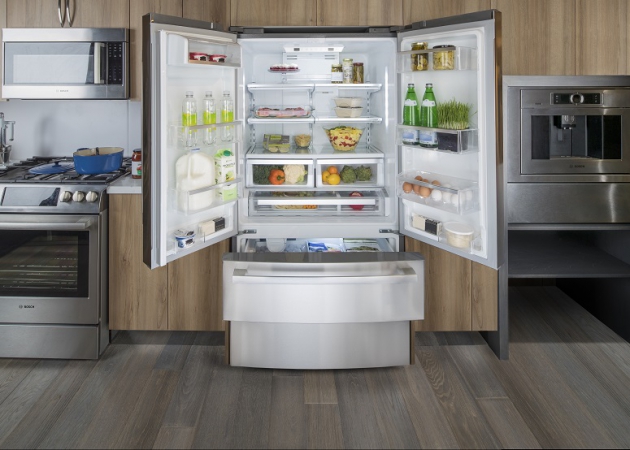Storing foods at the correct temperatures is one of the most effective ways to impede the growth of potentially dangerous bacteria. This makes it vital to ensure that your refrigerator is set at the proper temperature. Most of us are aware that keeping our food chilled in the refrigerator keeps it fresh longer, but it also provides us with vital protection against food borne illness. At room temperatures, the numbers of food borne sickness bacteria will double every 20 minutes. So, just what is the optimum temperature setting for your refrigerator?
The Optimum Temperature
To slow the growth of any bacteria, it is important that your refrigerator is operating at a temperature of 40º F or lower. Your freezer should be set at 0º F. Unfortunately, very few refrigerator models feature a control panel showing the actual temperature, so it can be difficult to determine whether your refrigerator is set at the optimum temperature.
Fortunately, you can make a relatively inexpensive purchase to verify that your refrigerator settings are correct; a freestanding appliance thermometer. This type of device can be used to monitor your refrigerator temperature and make any adjustments to the settings as needed. It is important to understand that the internal temperature of your refrigerator can vary according to how much is being chilled, the exterior temperature and other factors. This means that you can’t simply record the temperature and assume that setting 3 will always offer a 40º F temperature. You may need to adjust the settings according to the time of year, whether you’ve just been grocery shopping or even if the kids have been leaving the door open while they spend 5 minutes deciding on a snack a few times a day.
Other Food Safety Strategies
While the refrigerator temperature is important, there are additional steps you can take to ensure that your chilled items remain as safe as possible. The first thing is to ensure that you don’t over pack your refrigerator. Although it can be tempting to cram in your produce and perishables, particularly after a large grocery expedition, cold air needs to circulate to keep your items properly chilled. You should also immediately wipe up any spills as this will not only help reduce Listeria bacteria growth, it will also prevent “cross contamination,” particularly if the spills are drips from thawing or raw meat. You should also try to store any leftovers or refrigerated foods in sealed bags or covered containers. Of course, you should check any leftovers frequently for signs of spoilage and ensure that no expired food lingers in the back of your refrigerator. It is a good idea to develop good refrigerator management habits and make cleaning out your refrigerator part of your usual kitchen cleaning routines.
The Two Hour Rule
Finally, whether you are dealing with just purchased foods or leftovers, you need to think about the two-hour rule. It’s important that foods that need to be chilled are into your refrigerator quickly and allowing these perishable items to remain at room temperature for more than two hours allows any bacteria to rapidly multiply, putting you and your family at serious risk from food borne illness.
When you return from the grocery store, ensure that refrigerated or perishable items are put away as quickly as possible. If the air temperature outdoors is over 90º F, there is a limit of an hour for your produce being put in the refrigerator.
The two-hour rule also applies to leftovers and doggie bags of take-out food. If you want to help your hot food cool before putting it in the refrigerator, divide the leftovers into smaller containers, but putting warm food into your refrigerator won’t actually harm your appliance.
If you have concerns that your refrigerator is no longer up to the task of keeping your food properly chilled, you can explore the options with this online collection of refrigerators or contact a home appliance expert for a more specialist service.

